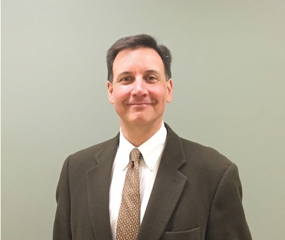Apr 3
2019
Creating A Physician-Centric Work Environment Makes Business Sense For Healthcare Systems
By Christopher Maiona, M.D., SFHM, chief medical officer, PatientKeeper, Inc.

The news on physician burnout lately has been mixed. A 2018 Massachusetts Medical Society/Harvard report received considerable attention – it proclaimed physician burnout has become a crisis, widespread in the medical profession, driven by rapid changes in health care and physicians’ professional environment. Yet last month a study published in Mayo Clinic Proceedings found that physician burnout actually declined more than 10 percentage points from 2014 to 2017, though the rate for doctors was still considerably higher than for U.S. workers at large. And just last week, an American Academy of Family Physicians survey reported that 71 percent of practicing physicians are happy, albeit frustrated by the extent to which administrative and clerical tasks have become part of their daily work.
What to make of all this seemingly contradictory data?
When I began practicing as a hospitalist in the 1990s, the administrative burden on physicians was much less than today, owing in part to the regulations and routine processes of the day and the typical patient caseload. Back then I saw 12 patients per day. With that caseload, you could break even on billing while still having plenty of time to interact with patients and colleagues. While it would not be feasible to return to that volume today, the point is that the hospital afforded a much more professionally rewarding environment. There was time to discuss interesting cases with colleagues. There was time to revisit patients and dig deeper into their records. You had time to sit at a patient’s bedside and hold their hand. The pace today does not afford this opportunity, much to the dissatisfaction of physicians. The resulting isolation from patients and peers is a contributing factor to the burnout seen among physicians.
Then there’s the technology component. EHRs are widely regarded as a significant cause of physician stress and a distraction from patient care. For example, when hospitals installed computerized order entry (CPOE), it eliminated the order clerk and created an additional job for the physician. The evolution of the clinical note is another example of unintended clinical burden, with roots in the evolution of medical practice and the emergence of EHRs.
Take a step back and consider what the original purpose of a physician’s note was: to advance patient care. The note would be updated on a visit-to-visit basis by the same physician or perhaps another physician in the same group covering a weekend. Then shift-based medicine came into play, and the note became a vital mechanism to facilitate care transitions. Then, as malpractice suits became more commonplace, lawyers began requiring physician documentation to support their legal case. From there, we saw the note transform from a clinical and legal document to a billing document and a check for RAC audits.
Given these trends, the pressure on provider organizations (and physicians individually) to document extensively and bill correctly for every service performed has grown over time. Concurrently, the practice of regularly reconciling clinical notes and charges also has grown in importance, both to identify missing charges (for revenue enhancement) and to identify missing notes (for compliance). In order that this process doesn’t become another straw on a physician’s administrative back, many organizations prefer to automate charge-note reconciliation within the revenue cycle management workflow.
For a variety of compelling business reasons, not limited to concerns about physician burnout, healthcare systems must attend to their physician experience with the same level of care and intention as their patient experience. Here are three ways that improving physician experience can help to bolster a hospital’s bottom line:
- Improved physician retention – A recent study by the Society of Human Resource Management found that employers spend the equivalent of six to nine months of an employee’s salary finding and training their replacement. Apply those figures to a physician’s salary and it’s enough to cause concern for even the most profitable hospitals. By investing in physicians’ professional experience and satisfaction, hospital executives can reduce both recruitment expense and the ripples of operational disruption that accompany any staff turnover.
- Higher quality care – When a physician has time back in his or her day, they can do more of the things they got into medicine to do, like: follow up or double back on items that required more information; collaborate with colleagues; and conceive new and innovative approaches to patient care delivery. Not only does this result in enhanced care quality, but under value-based care models, it also drives greater hospital reimbursements.
- Better patient outcomes – Research has consistently shown that when the physician is happier, the patient is happier … and ultimately healthier. Patients tend to listen to their care plan, follow instructions more closely, and generally collaborate more in their healthcare when they are more engaged with their physician. While having healthier patients is always the ultimate goal, improved outcomes also have a direct impact on a hospital’s reputation and bottom line.
It’s not just physicians who stand to benefit from an improved work environment, but patients and the entire hospital enterprise, as well. Regardless of which physician burnout statistics you subscribe to, creating a physician-centric work environment should be a high priority for healthcare system leaders.